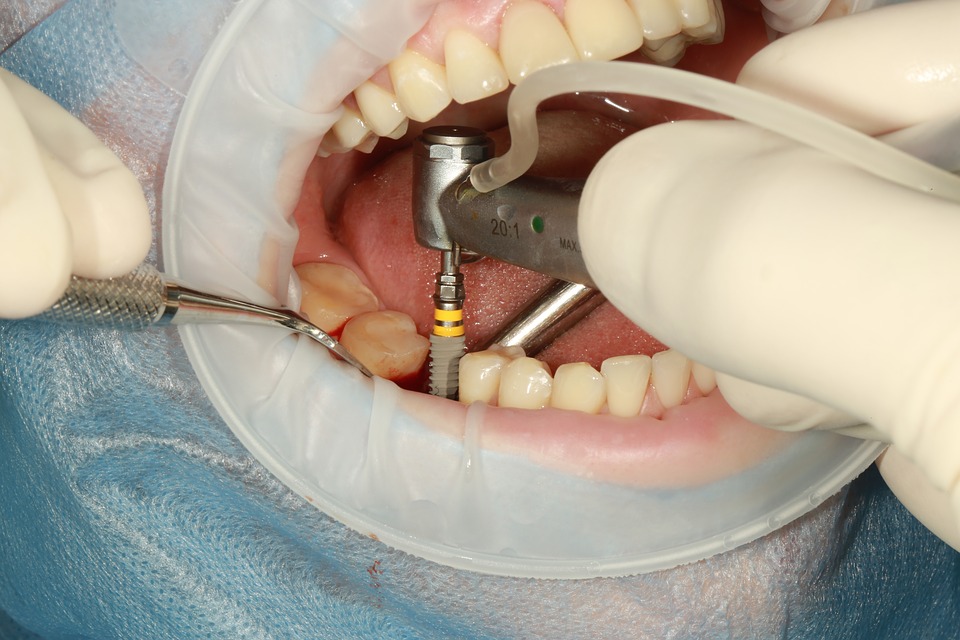Losing or damaging a tooth is never going to be an overly pleasant experience, not to mention the effect it can have on a smile or difficulties it’ll bring when trying to eat, which is why many people turn to experienced dentists in North Sydney for expert care.
The good news however is that there are a number of options available that’ll help patients to restore their smile, eat comfortably again, improve oral health, and speak more clearly, and depending on the specific needs of each case—as well as the patient’s age—there are a few permanent and semi-permanent options to choose from.
Two popular options for lost teeth are dental implants and partial dentures, also known as dental flippers, and over the course of this article we’ll break the two down and discover all of their benefits and how the two compare to one another, starting with…
Dental Implants
While most will refer to the replacement tooth on the whole as a dental implant, in reality the implant itself is just one of three parts, which also includes the dental crown (which serves as the visible tooth) and an abutment that keeps the implant and the crown connected. The dental implant is a small titanium post that’s screwed deep into the jawbone, where it essentially serves the same purpose as the root of a natural tooth. As it fuses with the surrounding jawbone through a process known as osseointegration, it becomes incredibly sturdy and robust.
There are two main types of dental implant available. Endosteal dental implants are the most common, and these are the ones that are placed within the jawbone, where they can fuse and become one with the surrounding bone. The other type is a subperiosteal dental implant, and these have been designed for those with shallow jawbones that wouldn’t be able to properly support endosteal dental implants. These are still placed underneath the gum, however on top of the jawbone, rather than within it.
What goes on during a dental implant procedure?
There are two main ways of performing dental implant surgery: in a two stage procedure or a single stage procedure.
Two stage dental implant procedure
Nine times out of ten endosteal dental implants will be installed in a two stage procedure. This means there’ll be two separate surgeries, with 3 to 6 months in between to allow the mouth to properly heal. During the first surgical procedure the dental surgeon will secure the implant within the jawbone, before a few months later the healed gum is cut open once again and the abutment (the connective piece between the implant and the crown) is fit on top of the implant.
Single stage dental implant procedure
With subperiosteal dental implants, the surgery will be complete in only a single stage. The implant is fit on top of the jawbone, rather than inside of it, leaving the head of the implant visible once the surrounding gum tissue heals. There’ll still be a several month long healing process, however no further surgery will be required to fit the abutment and crown once everything’s healed.
What are the benefits of dental implants?
There are a number of great benefits associated with dental implants, and the following are just a few of the most notable:
— Dental implants look and feel no differently from the rest of your natural teeth, providing you with a great, natural smile
— Dental implants are great for your neighbouring teeth, as unlike with a bridge, they won’t need to be altered to support any dental implants (which is also great for your oral health too)
— Dental implants are incredibly strong and robust, very nearly as strong and robust as a healthy natural tooth
— Since dental implants function no differently from the rest of your natural teeth, you don’t have to worry when it comes to eating
— Furthermore, they just fit and feel like natural teeth, so you don’t have to worry about anything feeling unnatural. You won’t even notice an implant is there
— Dentures or missing teeth can have a negative impact on your voice, which won’t be an issue with dental implants
— Dental implants are incredibly robust and durable, and should last you a lifetime
Partial Dentures
Partial dentures—also known as dental flippers—are a removable denture that can be used either permanently or as a temporary replacement for patients with one or more missing teeth. Depending on how many teeth are missing, partial dentures may be supported with a retainer, held in place by the surrounding teeth.
A special denture acrylic is used to create partial dentures, which resembles the gums.
What are the benefits of partial dentures?
Some of the benefits of partial dentures include:
— Partial dentures will fill in the gap left behind by any missing teeth, restoring the appearance of a full set of teeth
— Partial dentures are simple and easy to wear, and are easy to remove each night for cleaning
— Compared to dental implants, partial dentures are much more affordable
— Partial dentures don’t take long to make, and you can often get a set after only one or two days
— Partial dentures make eating with missing teeth much easier
— Partial dentures keep your surrounding teeth in place, preventing any of them from shifting
Partial dentures can also be a great option for those who’ve had dental implant surgery, but want something to restore their eating ability while they wait for the implant site to heal. Healing can often take as long as 6 months, so a temporary partial denture is a great option for the mean time.
If dental implants or partial dentures seem like something you could benefit from, then get in contact with us today for a free quote, and find out all of the great benefits you could take advantage of with an all-inclusive dental implants Turkey treatment package.



